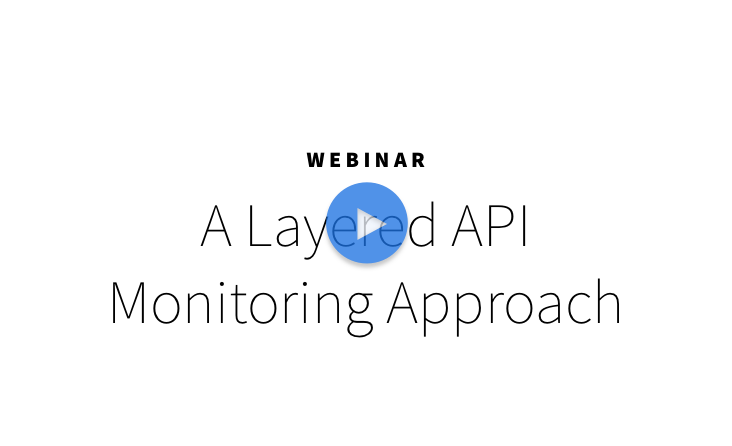API Monitoring
Prevent Slow or Broken APIs From Affecting Your Bottom Line
API Monitoring Fundamentals
Uptime Monitoring
Be the first to know when an API is down. Catch the problem before support tickets start cropping up.
Performance Measurement
Get visibility into API performance so you can stay ahead of intermittent problems that could cause outages.
Data Validation
Ensure that the structure and content of your API calls are returning the data that you—and your customers—expect.
Five Steps to API Monitoring Success
Run API monitors frequently
Keeping your API monitors on a consistent, continuous schedule is critical to getting an accurate view of API performance. You need to capture data flowing through your APIs constantly in order to spot trends and assess performance.
Validate response data
An API may be up and running fast, but if it’s returning the wrong data, then all your customers see is a broken app and a bad experience. Add assertions to your API monitors to make sure your APIs are returning the right data.
Cover functional use cases
We often build services with an intention of how they’ll be used, but more often than not, your end-users will find new and creative ways to leverage your APIs. Make sure the API monitors you’re building cover a wide variety of real-life use cases so that you’ll catch a potentially revenue-eating API error before your customers turn away and your support team gets blasted.
Include integrations with third-party & partner APIs
Apps and services rely on both internal and external APIs to provide key features or functionality. While you may be monitoring your own APIs, are your partners monitoring theirs? Save time problem-solving by building tests for the third-party APIs your apps depend on and running them on a schedule so you can identify issues fast and get the right people to solve them.
Get a complete performance picture
Monitoring your APIs consistently will give you the data to spot intermittent errors like slowly degrading performance. Pay attention to these patterns, as they may be signs of more complex issues with your API, such as database or hardware-related problems, that can be fixed before your API comes to a screeching halt.



